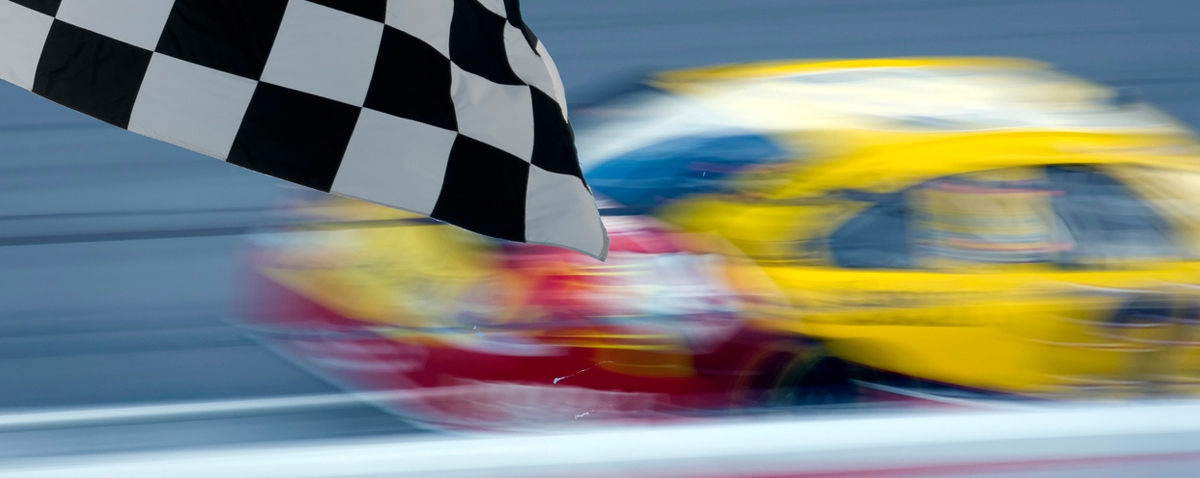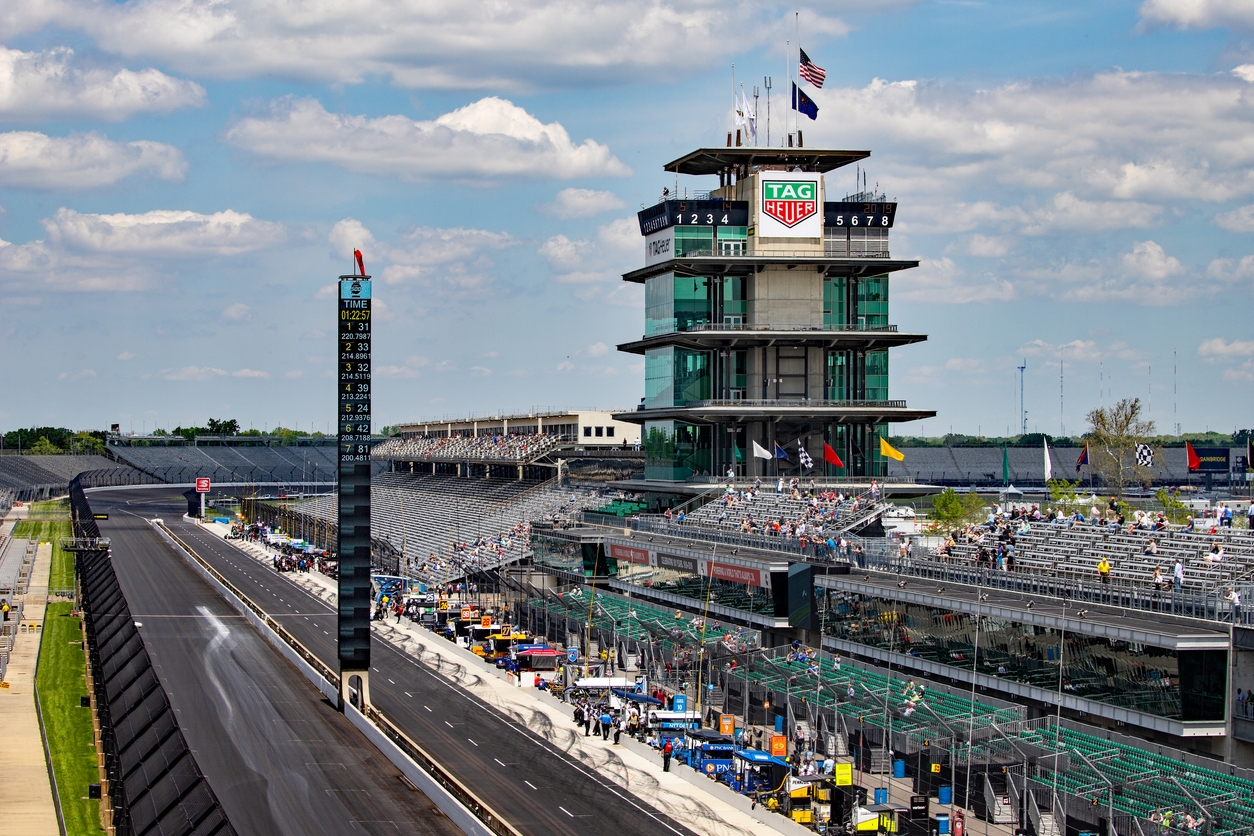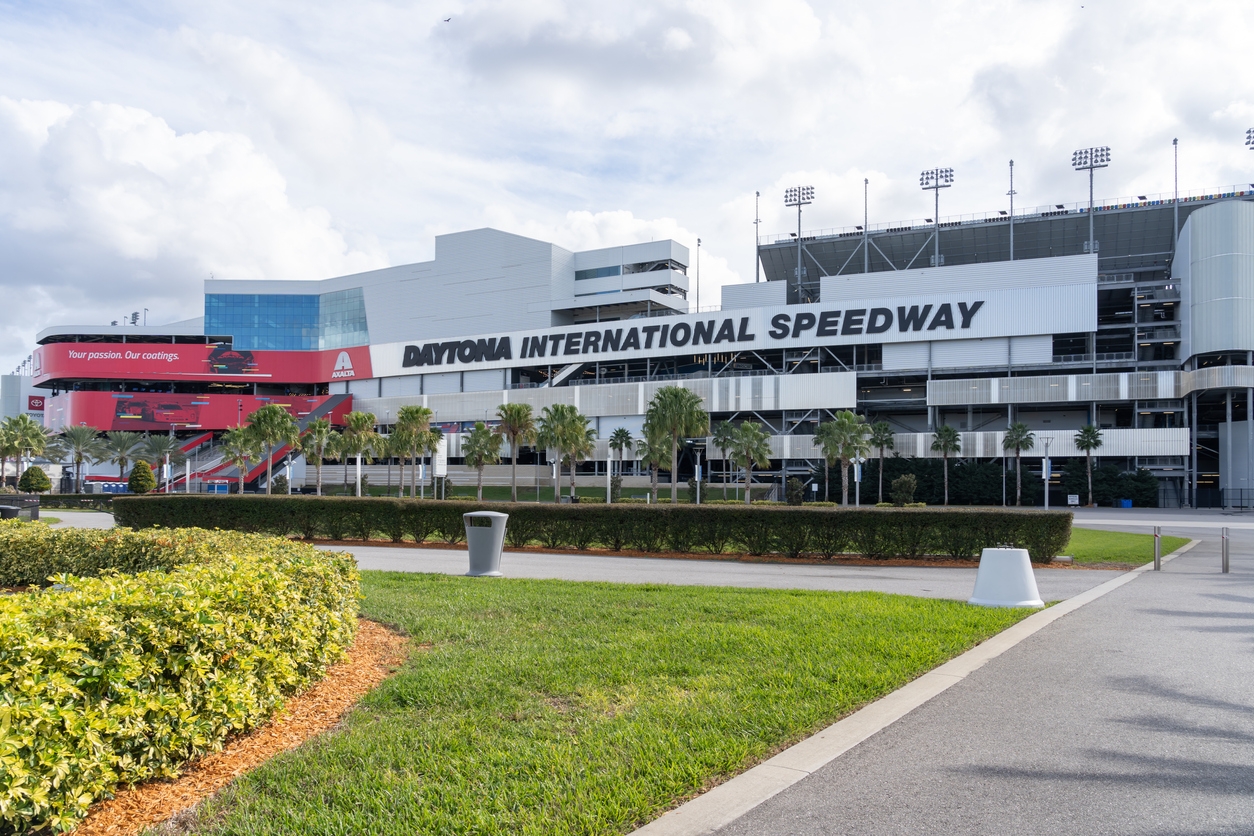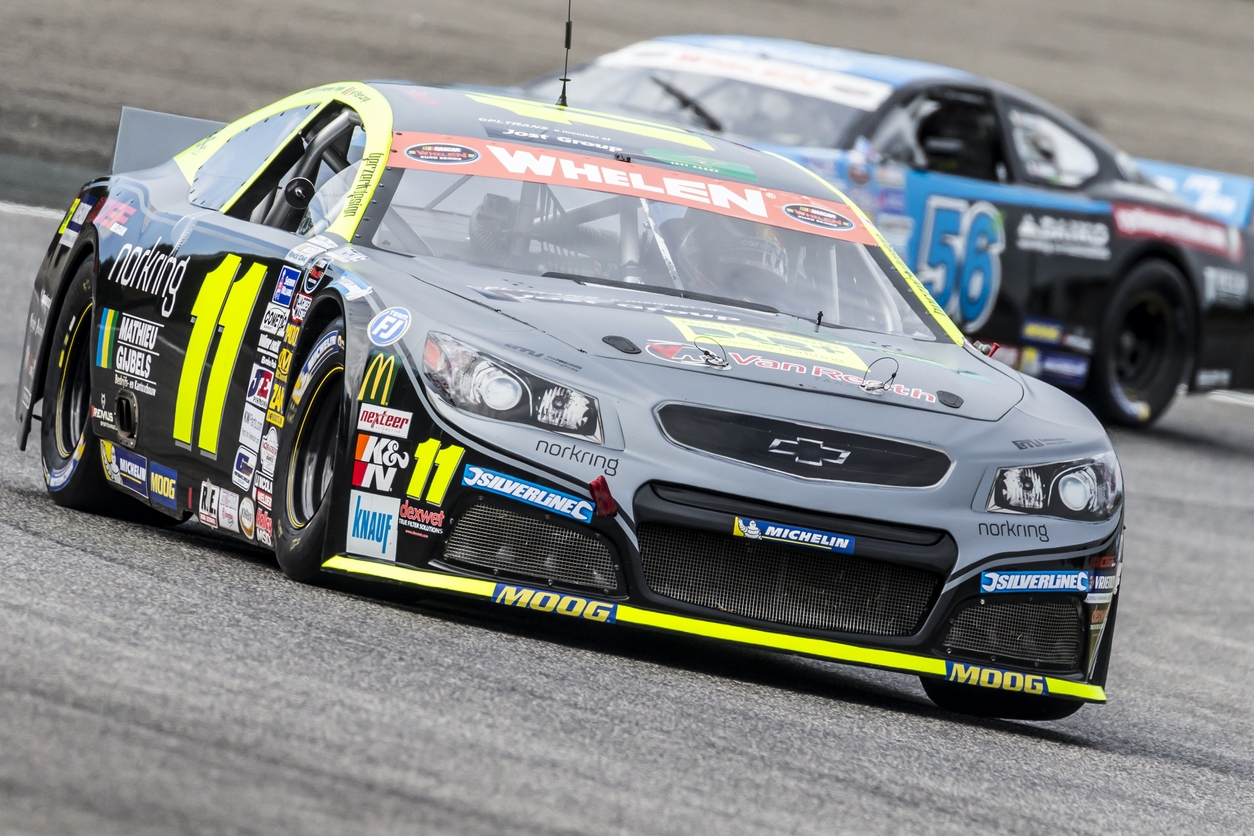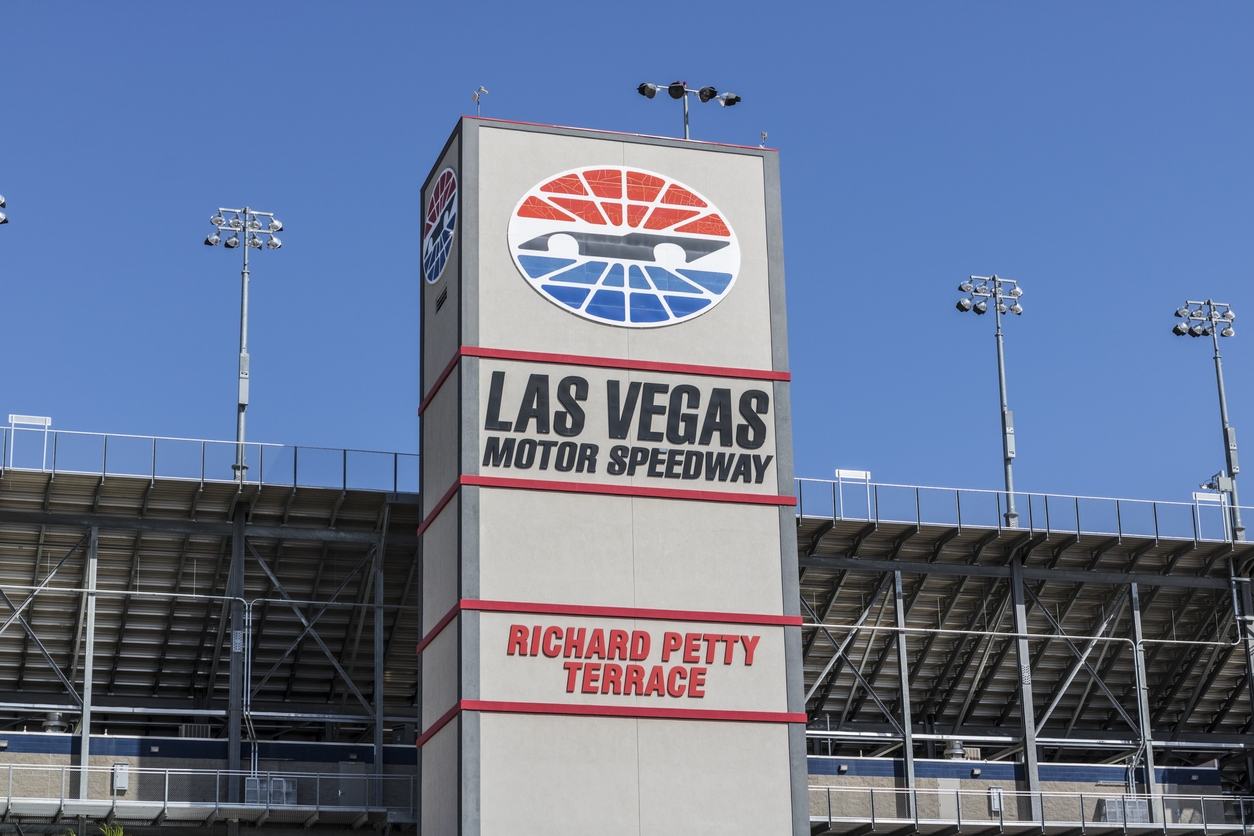National Association for Stock Car Auto Racing, NASCAR for short, is a legendary name in the world of motorsports. Transcending the confines of the racetrack, this motorsport powerhouse has captivated audiences with a unique blend of speed and strategy. There is an unmistakable sense of community among its fans.
The roaring engines, strategic driving, and high-speed action on the track make it a motorsport giant that has etched its name into the annals of American history. But beneath this fast-paced spectacle lies an incredible story. In this blog post, we embark on a historical voyage through time, delving into the remarkable origin story of NASCAR racing. From the earliest stock car races to the formation of a professional racing organization, every twist and turn of this narrative has contributed to the NASCAR phenomenon we know today.
So, fasten your seatbelts, as we take a drive down memory lane to explore the fascinating history of NASCAR racing.
Pre-NASCAR Era
Before NASCAR became a household name, there existed a raw and untamed world of stock car racing in the rural corners of the United States. [1] These races were a far cry from the structured tracks and regulated rules we associate with modern motorsports.
In the early 20th century, when automobiles were still a novelty, individuals with a need for speed found refuge in racing. Often, they turned to the very cars that were meant for daily transportation, transforming them into racing machines. This was the birth of stock car racing, a sport rooted in the grassroots of American society.
Role of Prohibition and Moonshine Runners
One cannot discuss the origins of stock car racing without mentioning Prohibition – the period from 1920 to 1933 when the sale and production of alcoholic beverages were banned in the United States. [2] This era created an unexpected side effect: the rise of moonshine runners.
Moonshiners were individuals who illegally distilled and transported homemade liquor, known as “moonshine.” To outsmart the law enforcement officers of the time, these bootleggers needed fast and nimble vehicles that could evade capture while carrying precious cargo. [3]
It wasn’t long before competition emerged among moonshine runners. They would often pit their souped-up cars against each other in impromptu races on dirt roads. This unofficial and hazardous form of racing laid the foundation for what would eventually become organized stock car racing.
As we’ll see, the pursuit of speed and the thrill of competition would soon lead to the formalization of stock car racing in the form of NASCAR.
| Year | Milestone |
| Early 20th Century | Stock car racing emerges as a grassroots motorsport. |
| 1920-1933 | Prohibition in the United States bans alcohol sales. |
| 1920s-1930s | Moonshine runners use fast cars to transport illegal liquor. |
| 1930s | Informal races between moonshine runners gain popularity. |
Formation of NASCAR
In the years following the Prohibition era and the rise of stock car racing, a pivotal figure emerged to shape the future of this motorsport phenomenon. His name was Bill France Sr., and his vision and dedication laid the foundation for what we now know as NASCAR. [4]
Bill France Sr. and the Birth of NASCAR
Bill France Sr. was a racing enthusiast who saw the potential in organizing and standardizing the scattered and informal stock car races that had become popular in the Southeastern United States. In 1947, he gathered a group of fellow racing enthusiasts and drivers at the Streamline Hotel in Daytona Beach, Florida, to discuss the formation of a governing body for stock car racing. [5] This meeting marked the birth of the National Association for Stock Car Auto Racing, or NASCAR.
The First Official NASCAR Race
On February 15, 1948, NASCAR held its first official race on the sands of Daytona Beach. [6] Red Byron emerged as the victor in a modified Ford. This event marked the beginning of NASCAR’s organized racing series, which would soon gain recognition and a dedicated following.
Establishment of Strict Rules and Regulations
One of the critical factors in NASCAR’s early success was its commitment to establishing standardized rules and regulations. Bill France Sr. and his team worked diligently to ensure fair competition and safety on the tracks. This commitment to consistency and fairness helped NASCAR gain credibility and attract both drivers and fans.
As NASCAR grew, it became evident that it was more than just a regional motorsport. It soon captured the hearts of fans across the United States, eventually becoming one of the most popular forms of auto racing in the world. This rise to prominence is built on the solid foundation of organization and dedication established in its early years.
The Inception of Iconic Races
As NASCAR gained momentum, it wasn’t long before iconic races started. These events etched their names into the annals of American motorsport, becoming the highlights of the racing calendar. Let’s delve into the fascinating stories behind the creation of these legendary races.
Race | Track | Inaugural Year | Significance |
Southern 500 | Darlington Raceway, SC | 1950 | Known as the "Track Too Tough to Tame," challenging both drivers and cars. |
Daytona 500 | Daytona Int'l Speedway | 1959 | "The Great American Race" was held at a high-speed superspeedway, a NASCAR staple. |
Talladega 500 | Talladega Superspeedway | 1969 | Known for high-speed pack racing, producing thrilling, close finishes. |
Bristol Night Race | Bristol Motor Speedway | 1978 | Short-track racing with steep banking, known for its intense action. |
Coca-Cola 600 | Charlotte Motor Speedway | 1960 | One of the longest races, testing drivers' endurance and strategy. |
Introduction of the Southern 500
The Southern 500 marked a pivotal moment in NASCAR’s history when it was introduced. [7] Hosted at the challenging Darlington Raceway in South Carolina, this race quickly gained recognition and prestige within the NASCAR community. The track’s unique egg-shaped design, along with its abrasive surface, made it a true test of both driver skill and car durability.
The Southern 500 became known for its grueling 500-mile distance, challenging the endurance of both drivers and their machines. Over the years, it earned a reputation as the “Track Too Tough to Tame,” solidifying its status as a must-watch event on the NASCAR calendar.
The Creation of the Daytona 500
In 1959, the motorsport world witnessed the birth of an iconic race – the Daytona 500. [8] Held at the newly constructed Daytona International Speedway, this event was destined to become NASCAR’s premier race. The high-banked, 2.5-mile superspeedway offered unprecedented speeds and excitement.
The inaugural race, won by Lee Petty in a photo finish, set the stage for decades of thrilling Daytona 500 races. The “Great American Race” quickly became a focal point of NASCAR, attracting the sport’s top drivers and a massive fan following. Its position on Presidents’ Day weekend turned it into a national spectacle, further solidifying its place in NASCAR history.
Expansion to Other Iconic Tracks and Races
Track | Location | Characteristics |
Daytona Int'l Speedway | Daytona Beach, Florida | High-speed superspeedway known for the Daytona 500. |
The Talladega Superspeedway | Talladega, Alabama | High-banked oval famous for its restrictor plate racing. |
Darlington Raceway | Darlington, South Carolina | "The Track Too Tough to Tame" with challenging corners. |
Bristol Motor Speedway | Bristol, Tennessee | Short track with high banking and close-quarters racing. |
Darlington Raceway | Concord, North Carolina | Known for hosting the Coca-Cola 600 and All-Star Race. |
Indianapolis Motor Speedway | Indianapolis, Indiana | Historic track known for the Brickyard 400. |
Martinsville Speedway | Martinsville, Virginia | Oldest NASCAR track, famous for its paperclip shape. |
NASCAR’s success continued as it expanded its reach to include other legendary tracks and races. The Talladega Superspeedway in Alabama, known for its high speeds and nail-biting pack racing, became a fan favorite. [9] Bristol Motor Speedway’s steep banking and tight confines produced some of the most intense short-track racing action. [10] Events like the Coca-Cola 600 at Charlotte Motor Speedway showcased NASCAR’s commitment to long-distance challenges, with 600 miles of racing testing drivers’ stamina and strategy. [11] These iconic tracks and races not only added diversity to NASCAR’s schedule but also contributed to the sport’s enduring popularity.
Evolution of NASCAR
Over the years, NASCAR has seen significant developments, contributing to its status as one of America’s most popular motorsports.
Technological Advancements and Innovations
As NASCAR progressed, technology played a vital role. Cars became more aerodynamic, equipped with advanced safety features like the “Car of Tomorrow.” [12] Innovations such as restrictor plates became one of the core materials used to make a car. Plus the increased safety on high-speed tracks like Talladega and Daytona have become the part of the sport’s identity.
Changes in Race Formats and Point Systems
NASCAR experienced shifts in its race formats and point systems. The Chase for the Nextel Cup, later renamed the NASCAR Playoffs, was introduced, changing the way championships were decided. [13] Different point systems came and went, with NASCAR continuously fine-tuning the formula for more exciting racing and fairer competition.
Growth in Popularity and Fan Base
NASCAR’s audience expanded significantly, earning fans worldwide. Iconic drivers like Richard Petty, Dale Earnhardt, and Jeff Gordon became household names.
| Iconic NASCAR Drivers | Achievements and Contributions |
| Richard Petty | 7-time Cup Series champion, known as “The King” |
| Dale Earnhardt | 7-time Cup Series champion, a legendary figure in the sport |
| Jeff Gordon | 4-time Cup Series champion, brought NASCAR into the mainstream |
| Jimmie Johnson | 7-time Cup Series champion, one of the modern greats |
| Darrell Waltrip | 3-time Cup Series champion, popular commentator |
Television broadcasts, sponsorships, and marketing efforts further fueled NASCAR’s growth. Today, it boasts a diverse and passionate fan base that continues to support the sport’s legacy.
Impact and Legacy
NASCAR’s influence extends beyond the racetrack, leaving a lasting impact on the world of motorsports.
NASCAR’s Influence on American Culture
Over the years, NASCAR has become more than just a racing sport. Just as Star Wars is an American cultural phenomenon, NASCAR is also deeply ingrained in American culture with millions of passionate fans. The sport’s close connection with its fan base, its colorful personalities, and the thrilling races have made NASCAR a significant part of the nation’s sports landscape. The popularity of NASCAR-themed merchandise, video games, and even movies underscore its cultural significance.
NASCAR’s Contribution to Safety in Motorsports
NASCAR has played a pivotal role in advancing safety standards in motorsports. Innovations like the SAFER barrier, the HANS device, and the development of the Car of Tomorrow (COT) have made racing safer not only for NASCAR drivers but for racers worldwide. The lessons learned from NASCAR’s commitment to safety have had a positive ripple effect, improving motorsport safety at large.
Conclusion
From its humble beginnings to its current status as a cultural phenomenon and a pioneer in motorsport safety, NASCAR is a testament to its enduring legacy. Founded on the foundation of stock car racing, it has evolved and adapted, setting the standard for motorsports worldwide. Its iconic races, legendary drivers, and innovations in safety have left an indelible mark on American culture and the world of racing. As NASCAR continues to grow and change, its impact on motorsports and society at large remains as strong as ever, making it an integral part of the American sports landscape and a source of pride for fans and participants alike.
References
- American racing. (2019, June 19). National Museum of American History. https://americanhistory.si.edu/america-on-the-move/essays/american-racing
- History.com Editors. (2009, October 29). Prohibition. HISTORY. https://www.history.com/topics/roaring-twenties/prohibition
- Worldofspeed. (2022, December 25). From moonshine to NASCAR. Latest Sports and Racing News – Stay Up to Date. https://worldofspeed.org/blog/from-moonshine-to-nascar/
- The man who created NASCAR – William ‘Bill’ France SR. | SnapLap. (2019, March 19). SnapLap. https://www.snaplap.net/william-bill-france-sr-a-man-who-created-nascar/
- Attention required! | Cloudflare. (2017, December 14). Google. https://www.google.com/amp/s/www.nascar.com/news-media/2017/12/14/nascar-streamline-hotel-meeting-throwback-thursday/amp/
- NASCAR history. (2019, July 21). Official Site Of NASCAR. https://www.nascar.com/nascar-history
- How the 1950 NASCAR southern 500 at Darlington changed everything. (2022, December 9). Autoweek. https://www.autoweek.com/racing/nascar/a42153975/1950-nascar-southern-500-darlington-changed-everything/
- Daytona 500: A rich, storied history on the fun coast. (2023, February 14). AP News. https://apnews.com/article/sports-automobile-racing-daytona-beach-500-504f947c60e5d6409910cb15e692cee0
- Talladega Superspeedway. (n.d.). RacingCircuits.info. https://www.racingcircuits.info/north-america/usa/talladega-superspeedway.html
- Just a moment… (n.d.). Just a moment… https://nascar101.nascar.com/nascar-tracks-bristol-motor-speedway/
- Coca-Cola 600. (n.d.). populartimelines.com. https://populartimelines.com/timeline/Coca-Cola-600
- How NASCAR’s car of tomorrow works. (2008, December 5). HowStuffWorks. https://auto.howstuffworks.com/auto-racing/nascar/nascar-basics/nascar-car-of-tomorrow.htm
- Caldwell, C. (2015, September 18). NASCAR 101: The history of the chase. Frontstretch. https://frontstretch.com/2015/09/18/nascar-101-the-history-of-the-chase/

